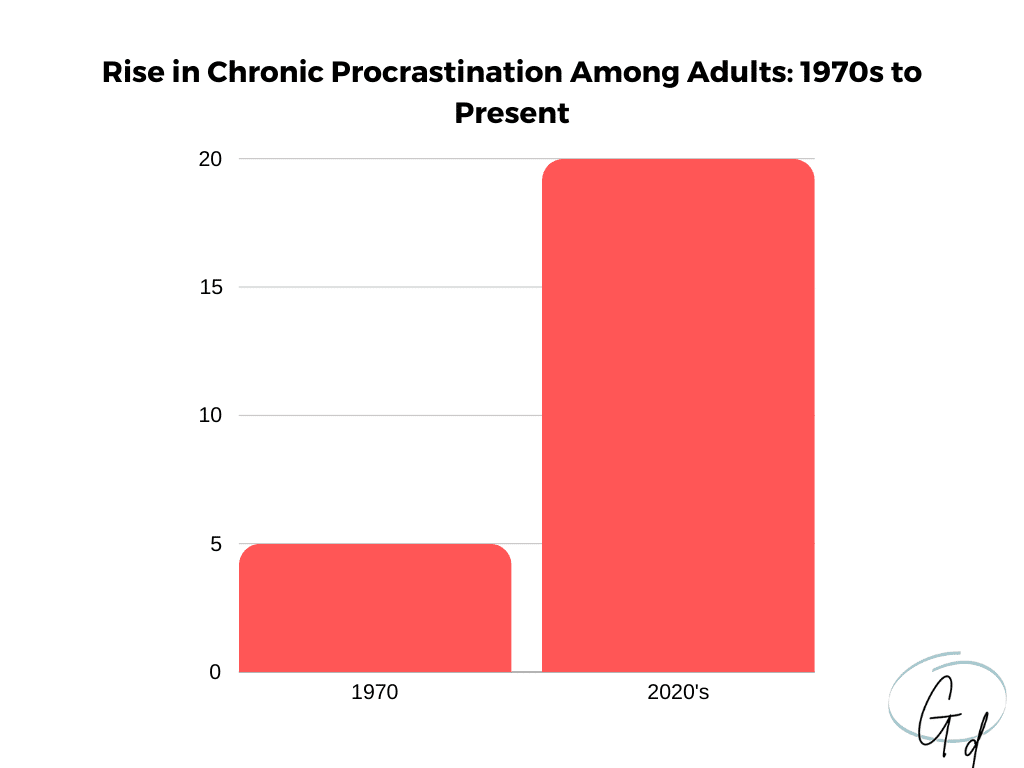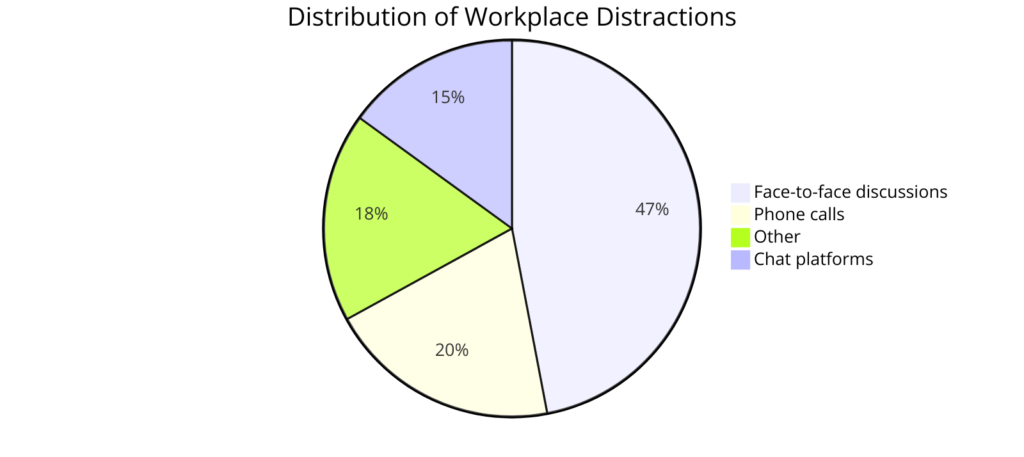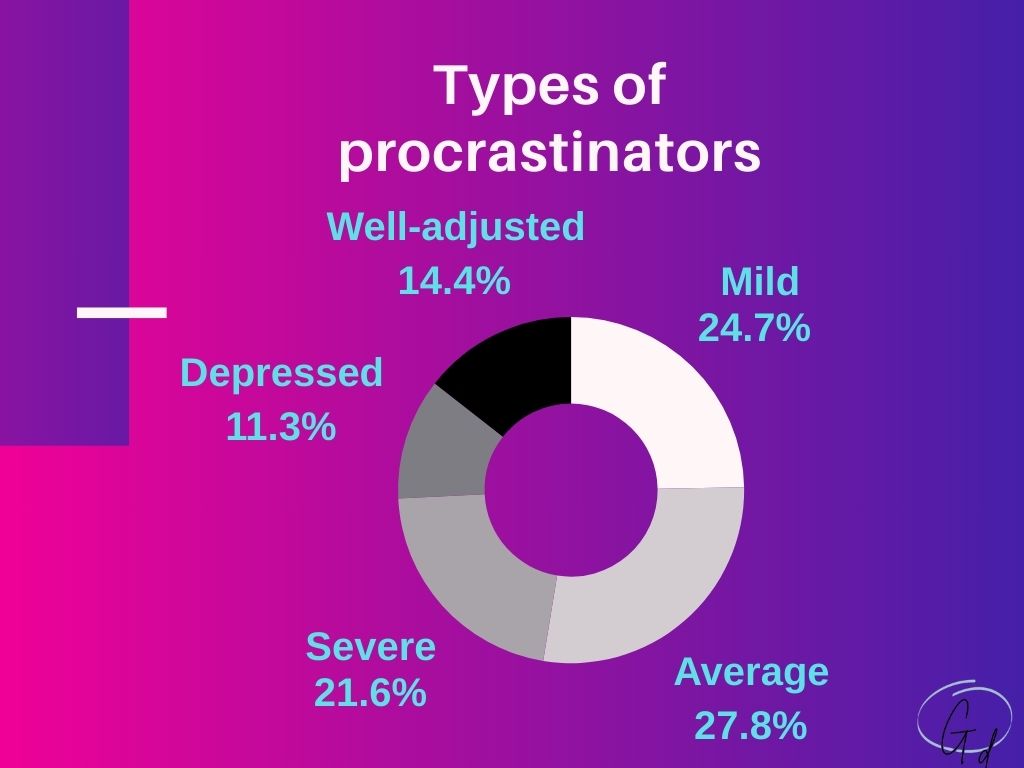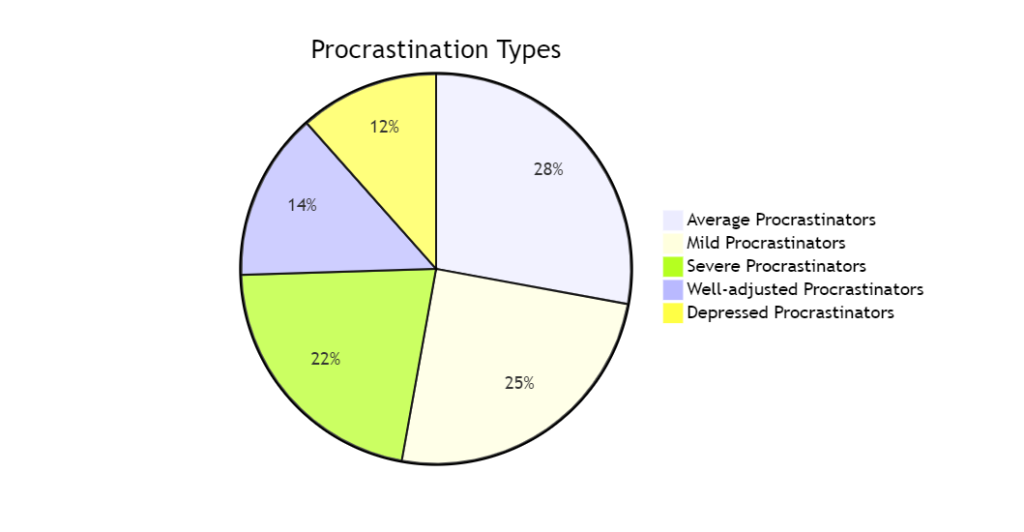Procrastination Statistics and Facts 2025: Shocking Truths
What do Dalai Lama, Bill Clinton, and Leonardo Da Vinci have in common?
It seems impossible, but they were procrastinators.
Surprised, aren’t you?
You’ll be shocked by the procrastination statistics and facts I gathered and included in this article. Be prepared because they won’t be easy to swallow.
Everyone has the tendency to procrastinate, but this habit can destroy your life, as happened to me.
Here are all the statistics and facts about procrastination you need to know in 2025.
Key Takeaways
- Procrastination is a global issue, with 1.59 hours spent procrastinating every day and an estimated 55 days spent procrastinating on average per year.
- Teens and young adults aged 14 – 29 are most prone to procrastination, with 81% of undergraduate students identified as habitual procrastinators.
- The consequences of procrastination include lowered productivity, academic performance issues, financial losses, and mental health concerns such as stress and anxiety.
- Technology plays a big role in procrastination; 57% of total online time is wasted due to various distractions instead of focusing on the task at hand.
How many people procrastinate in the world?
So, how common is procrastination? Here are some key statistics and facts:
- Approximately 20% of adults are identified as chronic procrastinators
- A broader survey found that 42.6% of adults procrastinate often or daily, with 20.5% reporting it as a daily issue. Only 15.6% of adults claim they never procrastinate
- Studies indicate that 75% of college students consider themselves procrastinators, while 80% to 95% admit to procrastinating at least occasionally. About 50% of them engage in chronic procrastination.
- Among adults, 50.7% reported using the internet as a means of procrastination, spending an average of 1.59 hours per day on procrastination-related online activities.
General statistics on procrastination
Procrastination is a widespread problem all over the world.
It often leads to problems like increased stress, anxiety, and lack of motivation.
I struggled with procrastination for all my 20s, so I know how it feels.
Here are some key statistics that shed light on the extent of this issue:
- 20% of adults admit to being chronic procrastinators, compared to the 5% in the 1970s
- People spend an average of 2 hours and 25 minutes per day procrastinating and over 55 days per year.
- According to a recent poll, 94% of respondents said procrastination makes them unhappy.
- According to a study by StudyMode Student Psyche Report, 48% of people consider distraction as the major reason for procrastinating, followed by feeling overwhelmed ( 40% of people)
- A study found that procrastination is a more common problem than alcoholism, substance abuse, and depression, affecting a more significant number of people.

And then, my favorite one:
Watching cat videos on YouTube was a common procrastination activity in 2014 ( source)
These general facts about procrastination should help you understand how many people struggle with procrastination it is and how it can severely impact our daily lives.
Ready to beat laziness and procrastination? Here’s what you must do!
Workplace Procrastination
What better place to procrastinate than the workplace?
Here, the consequences of procrastination are very bad.
As an account manager, I manage over ten people, so I know how procrastination affects every workplace.
- 88% of workers procrastinate for at least 1 hour per day
- 8.7% of salaried workers are “hardcore procrastinators” who waste at least 8 hours in their work day.
- On the other hand, entrepreneurs who consider themselves ” hardcore procrastinators”, waste around 4 hours per day.
- Procrastination costs businesses $15,000 annually per $40,000 salaried worker.
- 47% of employees find face-to-face discussions disruptive, with phone calls (20%) and chat platforms (15%) following in terms of distraction. In fact, these are the most common time wasters that hinder our productivity.

Procrastination can also have serious consequences on the relationships with colleagues and managers.
I agree; when you can’t meet your deadlines and are always late, you lose credibility.
They start avoiding you and don’t count on you anymore.
This situation sucks.
In fact, employees who put off work often have more conflicts with coworkers and bosses.
This bad habit is more common in roles that require a high degree of self-discipline and independent work.
Student Procrastination
Procrastination among students is a common problem.
Staying on track and meeting deadlines was almost impossible when I was younger.
We all went to school, so we know well that students often prefer to have fun and go out rather than spend their days studying.
The data speaks clearly:
- A study found that between 80% and 95% of college students procrastinate at least some of the time
- Over 50% of high school students said they struggle with this bad habit. So, half of all students have a procrastination problem!
- 86% of high school students admit to procrastinating on assignments
- Around 68.7% of students tend to procrastinate on their presentations.
- About 64.4% of students procrastinate when it comes to studying for exams.
- Procrastination is more prevalent among college and university students than high school students.
- 53% of high school students, 53% of undergraduate students, and 61% of graduate students frequently procrastinate.
- 60-75% of first-year college students report studying less than 10 hours per week, while only 5% study more than 20 hours
| Category | High School Students | Undergraduates | Graduate Students |
|---|---|---|---|
| Prevalence of Procrastination | 50% consistently and problematically | 80-95% to some degree, 39% always | Not specified, but likely similar to undergraduates |
| Most Common Tasks Procrastinated On | Assignments (86%) | Term papers (46%), weekly readings (30%), studying for tests (28%) | Weekly readings (60%), term papers (42%), studying for tests (39%) |
| Bedtime Procrastination | Growing trend, leads to less sleep | Growing trend, leads to less sleep | Growing trend, leads to less sleep |
| Impact of Pandemic | 40% reported increased sleep issues | 40% reported increased sleep issues | 40% reported increased sleep issues |
| Daily Time Spent Procrastinating | Approx. 218 minutes | Approx. 218 minutes | Approx. 218 minutes |
Statistics and facts about the types of procrastinators

Not all procrastinators are equal.
There are six types of procrastinators with different behaviors.
- Nearly a quarter (24.93%) are mild procrastinators. They rarely put things off and experience minimal disruption to their daily lives.
- Over a quarter (27.89%) fall under average procrastinators. They occasionally procrastinate, which may lead to missed deadlines.
- Around one-fifth (21.69%) are classified as severe procrastinators. These individuals struggle with significant procrastination, often resulting in a complete lack of productivity throughout the day.
- Over 10% (11.55%) are primarily depressed procrastinators. They procrastinate due to depression and experience anxiety and restlessness.
- Almost 14% (13.94%) are considered well-adjusted procrastinators. They procrastinate regularly but don’t experience negative health consequences.
If you want to beat procrastination, you first need to understand what type you are.
Make sure to check my article about the different types of procrastinators and what you can do to defeat this bad habit.
What’s the impact of procrastination on productivity?
There’s a strong and negative correlation between procrastination and time management.
When you keep putting things off, you can’t achieve what you’re supposed to do.
- Chronic procrastination is linked to lower productivity, job performance, and career advancement.
- Distractions from social media, internet browsing, and personal communications can reduce productivity by up to 40%. That’s why you must learn how to manage distractions and interruptions.
- Chronic procrastination is linked to lower productivity, job performance, and career advancement.
- Studies indicate a moderate negative correlation between time management skills and procrastination among university students.
- According to one study, 11 million meetings occur yearly, with 91% of staff admitting to daydreaming and 95% missing meetings altogether.

Procrastination is often underestimated, but it’s important to be aware of its consequences.
You can’t reach your goals and be consistent if you keep postponing your tasks.
Facts about procrastination and technology
Technology contributes to procrastination, especially if we can’t control our behavior.
- 75% of people consider procrastination, often fueled by technology, a personality trait or problem.
- The average US employee wastes nearly 2.9 hours every day at work, much of it on non-work-related technology use.
- Around 64% of employees visit many websites unrelated to work on a regular basis. Phone distractions, scrolling social media and constantly checking emails are the most common examples of procrastination at work.
- Employees spend 21 hours per week browsing websites, checking social media, and online shopping.
So basically, if you can use technology and the internet during work, you’re more likely to procrastinate.
That’s why you must learn how to control yourself and block useless distractions, as I did.
The best way to do it?
Start using focusing apps like Freedom or Rescuetime to increase your focus and productivity, by mastering time boxing and improving concentration.
You can’t just say, ” I don’t want to spend time online procrastinating.”
You need to do something.
Technology can lead to procrastination, but you use technology to your advantage.
Try to use these apps at least once a week and then use them more consistently.
I’ve seen incredible results in my productivity and consistency, so start as soon as possible!
What are the main causes of procrastination?
What are the most common causes of procrastination?
Here are some facts and statistics that will help you understand why you keep doing it.
- Disliking a task is a major reason people procrastinate. Over 50% say they put things off because of something unpleasant about the task.
- Lack of energy is another common cause of procrastination, affecting individuals who feel drained or fatigued.
- Personal obligations like cleaning or running errands can lead to procrastination instead of focusing on essential tasks.
- The fear of failure is a significant factor in procrastination, as individuals may avoid tasks to prevent potential failure.
Procrastination is also caused by other factors like:
- Excessive perfectionism
- Unrealistic goals
- Poor time management. In this case, consider a time-boxing app like Motion App
- Low self-esteem
- Lack of accountability
- Depression
Also, genetic factors can play a crucial role in procrastination.
- Genetics can explain at least 46% of a person’s tendency to procrastinate.
- Males procrastinate more than females, with a moderate effect size.
- Variations in the TH gene, which regulates dopamine production, are associated with procrastination.
- Procrastination is more common among individuals with lower socioeconomic status.
- Younger individuals may be more likely to procrastinate compared to adults.
- Procrastination is more prevalent in Western cultural contexts than in Eastern cultural contexts.
- Procrastination may be an evolutionary byproduct of impulsivity, as the two traits share a high genetic overlap.
So yes, you can have genetic influences on procrastination.
Is this an excuse to keep doing it?
Hell no.
Crying on yourself won’t solve the problem.
I’m not genetically lucky to put on muscle mass.
I’ve always been skinny-fat.
But that doesn’t mean I can say, “Okay, I’ll never make it.”
This means I will have to work harder than a genetically lucky person.
Learn to have this high achiever approach, and I assure you that no one will stop you from achieving your goals.
Anti-procrastination apps have been a game-changer for me.
Find out the best tools to regain your productivity!
What are the effects of procrastination?
Procrastination can have serious consequences on your life.
Yes, it can literally destroy your relationships and your career.
Why?
Take a look at these facts:
- Procrastination damages self-esteem, resulting in a lack of motivation and confidence.
- Chronic procrastination is linked to hypertension, heart disease, and cardiovascular illness.
- Procrastination can lead to a higher tendency to fail to activate and maintain short-term and long-term goals.
- Procrastination is linked to a higher tendency to engage in impulsive behaviors and a reduced ability to manage goals effectively. Is also more common among individuals with a lower threshold for tolerating negative emotions.
Conclusion
We all procrastinate daily, and it’s normal if it doesn’t become a problem that seriously affects our businesses and routines.
But as these statistics and facts about procrastination have shown, this problem is often too underestimated, and we do not realize the damage it can cause us.
Ultimately, we must recognize the consequences of postponing activities too frequently; taking concrete steps to limit distraction may help us overcome undesirable habits like procrastination sooner rather than later.
So, what are you waiting for? Learn how to beat procrastination and laziness once and for all!

About Author
Giovanni is a maestro of time management, motivation, and accountability.
With an experience of over seven years as an account manager, during the night, he transforms into an SEO consultant, one of his many passions.
In this blog, he shares his best tips on becoming the best version of yourself based on his experience. Learn more






